Coating of chitosan on poly D,L-lactic-co-glycolic acid thymoquinone nanoparticles enhances the anti-tumor activity in triple-negative breast cancer
- PMID: 36846852
- PMCID: PMC9945229
- DOI: 10.3389/fchem.2023.1044953
Coating of chitosan on poly D,L-lactic-co-glycolic acid thymoquinone nanoparticles enhances the anti-tumor activity in triple-negative breast cancer
Abstract
Breast cancer is the second most common cancer around the world. Triple-negative breast cancer (TNBC) is characterized by the absence of three receptors: progesterone, estrogen, and human epidermal growth factor-2 receptor (HER2). Various synthetic chemotherapies have gained attention but they caused unwanted side effects. Therefore, some secondary therapies are now becoming famous against this disease. For instance, natural compounds have been extensively researched against many diseases. However, enzymatic degradation and low solubility remain a major concern. To combat these issues, various nanoparticles have been synthesized and optimized from time to time, which increases its solubility and hence therapeutic potential of a particular drug increases. In this study, we have synthesized Poly D,L-lactic-co-glycolic acid (PLGA) loaded thymoquinone (TQ) nanoparticle (PLGA-TQ-NPs) and then coated them by chitosan (CS) (PLGA-CS-TQ-NPs), which was characterized by different methods. Size of non-coated NPs was 105 nm with PDI value of 0.3 and the size of coated NPs was 125 nm with PDI value of 0.4. Encapsulation efficiency (EE%) and Drug loading (DL%) was found to be 70.5 ± 2.33 and 3.38 for non-coated and 82.3 ± 3.11 and 2.66 for coated NPs respectively. We have also analysed their cell viability against MDA-MB-231 and SUM-149 TNBC cell lines. The resultant, nanoformulations exhibit anti-cancerous activity in a dose and time-dependent manner for MDA-MB-231 and SUM-149 cell lines with an IC50 value of (10.31 ± 1.15, 15.60 ± 1.25, 28.01 ± 1.24) and (23.54 ± 1.24, 22.37 ± 1.25, 35 ± 1.27) for TQ free, PLGA-TQ-NPs and PLGA-CS-TQ-NPs respectively. For the first time, we have developed a nanoformulations of PLGA loaded TQ coated with CS NPs (PLGA-CS-TQ-NPs) against TNBC which led to their enhanced anti-cancerous effects.
Keywords: chitosan; hybrid nanoparticles; polylactic acid; polymeric nanoparticles; thymoquinone; triple negative breast cancer.
Copyright © 2023 Gao, Kumari, Zeng, Chan, Farooq, Alee, Khan, Rahaman, He, Xin and Mehmood.
Conflict of interest statement
The authors declare that the research was conducted in the absence of any commercial or financial relationships that could be construed as a potential conflict of interest.
Figures

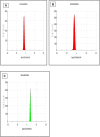
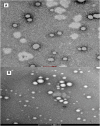
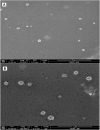



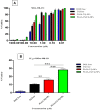
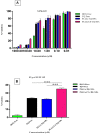
Similar articles
-
Formulation, Characterization and Cytotoxicity Effects of Novel Thymoquinone-PLGA-PF68 Nanoparticles.Int J Mol Sci. 2021 Aug 30;22(17):9420. doi: 10.3390/ijms22179420. Int J Mol Sci. 2021. PMID: 34502328 Free PMC article.
-
Preferential tumor accumulation and desirable interstitial penetration of poly(lactic-co-glycolic acid) nanoparticles with dual coating of chitosan oligosaccharide and polyethylene glycol-poly(D,L-lactic acid).Acta Biomater. 2016 Jan;29:248-260. doi: 10.1016/j.actbio.2015.10.017. Epub 2015 Oct 22. Acta Biomater. 2016. PMID: 26476340
-
Synthesis and Characterization of PLGA-PEG Thymoquinone Nanoparticles and Its Cytotoxicity Effects in Tamoxifen-Resistant Breast Cancer Cells.Adv Exp Med Biol. 2020;1292:65-82. doi: 10.1007/5584_2018_302. Adv Exp Med Biol. 2020. PMID: 30560443
-
Recent Advances of Multifunctional PLGA Nanocarriers in the Management of Triple-Negative Breast Cancer.AAPS PharmSciTech. 2023 Dec 14;24(8):258. doi: 10.1208/s12249-023-02712-7. AAPS PharmSciTech. 2023. PMID: 38097825 Review.
-
Recent advances in polymeric nanoparticles for the treatment of hepatic diseases.Front Pharmacol. 2025 Jan 24;16:1528752. doi: 10.3389/fphar.2025.1528752. eCollection 2025. Front Pharmacol. 2025. PMID: 39925843 Free PMC article. Review.
Cited by
-
Potential anticancer properties and mechanisms of thymoquinone in colorectal cancer.Cancer Cell Int. 2023 Dec 12;23(1):320. doi: 10.1186/s12935-023-03174-4. Cancer Cell Int. 2023. PMID: 38087345 Free PMC article. Review.
-
Emerging phytochemical-based nanocarriers: redefining the perspectives of breast cancer therapy.Naunyn Schmiedebergs Arch Pharmacol. 2025 Mar 26. doi: 10.1007/s00210-025-04003-3. Online ahead of print. Naunyn Schmiedebergs Arch Pharmacol. 2025. PMID: 40137964 Review.
References
-
- Adinew G. M., Taka E., Mochona B., Badisa R. B., Mazzio E. A., Elhag R., et al. (2021). Therapeutic potential of thymoquinone in triple-negative breast cancer prevention and progression through the modulation of the tumor microenvironment. Nutrients 14 (1), 79. 10.3390/nu14010079 - DOI - PMC - PubMed
LinkOut - more resources
Full Text Sources
Research Materials
Miscellaneous

